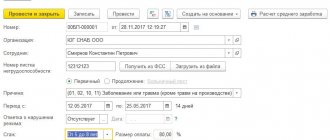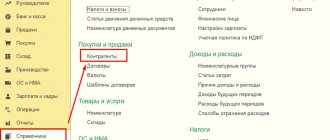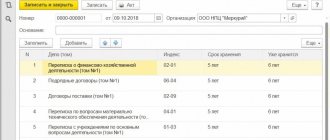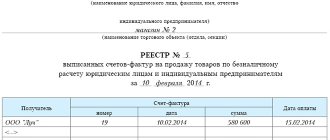Document access restriction stamp
The latest edition of the document preparation standard is GOST R 6.30-2003 “Unified documentation systems. Unified system of organizational and administrative documentation. Requirements for the preparation of documents,” - unlike previous editions, does not include the attribute “Grade for restricting access to a document,” although such attribute is often used when working with restricted access documents, and even in some cases is provided for by law.
State secrets and confidential information
In accordance with the Federal Law of July 27, 2006 No. 149-FZ “On Information, Information Technologies and Information Protection” (hereinafter referred to as the Federal Law “On Information, Information Technologies and Information Protection”), information is divided into publicly available information and information with access to which it is limited. Restrictions on access to information are established by federal laws.
Restricted information may constitute a state secret
(and then the circulation of information is regulated by the Law of the Russian Federation of July 21, 1993 No. 5485-1 “On State Secrets” (as amended on August 22, 2004); hereinafter referred to as the Law of the Russian Federation “On State Secrets”) or
confidential information
.
The concept of state secret is defined by the Law of the Russian Federation “On State Secrets”: “state secret is information protected by the state in the field of its military, foreign policy, economic, intelligence, counterintelligence and operational investigative activities, the dissemination of which may harm the security of the Russian Federation
" The list of information constituting a state secret is determined by Decree of the President of the Russian Federation dated February 11, 2006 No. 90 “On the list of information classified as state secret.”
The concept of information confidentiality is explained by the Federal Law “On Information, Information Technologies and Information Protection”: “information confidentiality is a mandatory requirement for a person who has access to certain information not to transfer such information to third parties without the consent of its owner.”
.
The organization of work with confidential information is regulated by a number of laws. The concept of confidential information includes various types of information, the list of which is established by Decree of the President of the Russian Federation dated 03/06/1997 No. 188 “On approval of the List of confidential information” (as amended on 09/23/2005):
1. Information about the facts, events and circumstances of a citizen’s private life, allowing his personality to be identified (personal data), with the exception of information that is subject to dissemination in the media in cases established by federal laws.
2. Information constituting the secret of investigation and legal proceedings.
3. Official information, access to which is limited by government authorities in accordance with the Civil Code of the Russian Federation and federal laws (official secrets).
4. Information related to professional activities, access to which is limited in accordance with the Constitution of the Russian Federation and federal laws (medical, notarial, attorney-client confidentiality, confidentiality of correspondence, telephone conversations, postal items, telegraphic or other messages, etc.).
5. Information related to commercial activities, access to which is limited in accordance with the Civil Code of the Russian Federation and federal laws (trade secrets).
6. Information about the essence of the invention, utility model or industrial design before the official publication of information about them.
Restricting access to documents
It is customary to mark documents containing restricted access information (state secrets or any type of confidential information) as restricting access to the document. As a rule, on documents the restriction stamp is affixed in the upper right corner of the first sheet of the document. In a system of secret and confidential office work, the access restriction stamp is usually affixed on an electronic storage medium (disk, floppy disk) and on packaging, for example an envelope in which a restricted document is sent.
In a number of cases, the form of this stamp, the procedure for its affixing, as well as the composition of additional information accompanying the access restriction stamp are established by law.
Classes restricting access to documents containing state secrets
The Law of the Russian Federation “On State Secrets” establishes secrecy stamps - details indicating the degree of secrecy of information, affixed on the medium itself and (or) in the accompanying documentation to it. The law establishes three degrees of secrecy and, accordingly, three classifications of restricting access to documents: “secret”, “top secret” and “special importance”. The law also establishes that, along with the secrecy stamp, the following information is additionally applied to the carrier of information constituting a state secret:
- on the degree of secrecy of the information contained in the medium with reference to the corresponding item in the list of information subject to classification, operating in a government body or organization;
- about the government body, organization that carried out the classification of the carrier;
- about the registration number;
- about the date or condition of declassification of information or about the event after the occurrence of which the information will be declassified.
If it is impossible to put such details on a medium of information constituting a state secret, these data are indicated in the accompanying documentation for this medium. If a medium contains component parts with different degrees of secrecy, each of these parts is assigned a corresponding security classification, and the carrier as a whole is assigned a security classification corresponding to the security classification that is assigned to its component part, which has the highest degree of information secrecy for this medium.
In addition to the listed details, additional marks may be placed on the medium and (or) in the accompanying documentation, defining the authority of officials to familiarize themselves with the information contained in this medium.
The law also establishes that the use of the listed secrecy classifications to classify information that is not classified as a state secret is not permitted.
Classes restricting access to documents containing confidential information
The procedure for placing access restriction stamps on documents containing confidential information is less certain. The legislation establishes stamps (marks) for restricting access to documents containing trade secrets
and
official secrets
. For documents containing other types of confidential information, the access restriction stamp is determined by the owner or user of the information.
Federal Law No. 98-FZ of July 29, 2004 “On Trade Secrets” (as amended on July 24, 2007) establishes that a trade secret is the confidentiality of information that allows its owner, under existing or possible circumstances, to increase income, avoid unjustified expenses, and preserve position in the market for goods, works, services or obtain other commercial benefits.
The law establishes measures to protect the confidentiality of information classified as a trade secret, taken by its owner. They include:
1) determination of the list of information constituting a trade secret;
2) restricting access to information constituting a commercial secret by establishing a procedure for handling this information and monitoring compliance with such a procedure;
3) accounting of persons who gained access to information constituting a trade secret and (or) persons to whom such information was provided or transferred;
4) regulation of relations regarding the use of information constituting a trade secret by employees on the basis of employment contracts and contractors on the basis of civil law contracts;
5) affixing on tangible media (documents) containing information constituting a trade secret the stamp “Trade Secret” indicating the owner of this information (for legal entities - full name and location, for individual entrepreneurs - surname, name, patronymic of the citizen who is individual entrepreneur, and place of residence).
Thus, the law clearly defines the type of stamp - “Trade Secret” and the composition of additional information also applied to the document.
The procedure for working with official information of limited distribution in federal executive authorities and organizations subordinate to them is established by Decree of the Government of the Russian Federation dated November 3, 1994 No. 1233 “On approval of the Regulations on the procedure for handling official information of limited distribution in federal executive authorities.” The requirements of this Regulation apply to the procedure for handling not only documents on paper, but also official information of limited distribution on other tangible media (photo, film, video and audio tape, computer storage media, etc.).
The resolution established that documents (if necessary, and their drafts) containing proprietary information of limited distribution are marked “For official use.”
The need to put this mark on documents and publications containing proprietary information of limited distribution is determined by the performer and the official signing or approving the document. The specified mark and copy number are affixed in the upper right corner of the first page of the document, on the cover and title page of the publication, as well as on the first page of the covering letter for such documents.
The procedure for removing the “For official use” mark from media of limited distribution is determined by the head of the federal executive body.
Documents containing information of limited distribution are prepared in the typewriting bureau of the federal executive body or an organization subordinate to it. Along with the note “For official use” on the back of the last sheet of each copy of the document, the typist must indicate the number of printed copies, the surname of the performer, his surname and the date of printing of the document.
note
In cases where the legislation does not establish the form of a stamp (mark) restricting access to documents containing confidential information, the owner or user of the information can decide to apply any stamp. In this case, the “Confidential” stamp is most often used. It is convenient in that it does not reveal the nature of the information contained in the document, unlike, for example, such stamps as “Banking secrecy”, “Tax secrecy”, etc., used to designate information related to professional activities, access to which limited in accordance with the Constitution of the Russian Federation and federal laws.
Along with the “Confidential” stamp, the “Strictly Confidential” stamp can be used to indicate a higher level of confidentiality. The procedure for establishing these marks should be regulated by the internal regulatory documents of the organization working with documents of a confidential nature.
Principles for assigning information the status of state secret
To ensure reliable protection of information, the current classification procedure is regularly improved. Scientific and technological progress requires modernization of the information and technical base for handling data representing state secrets.
The process of classifying information as secret is strictly regulated and determined by the principles (Article 6 of Federal Law No. 5485-1):
- legality - compliance of data with the provisions of regulatory documentation (Articles 5, 7 of Federal Law No. 5485-1);
- validity - determining the need and expediency of classifying materials as secret, the risk of negative consequences when disseminating information based on expert assessment;
- timeliness - consists in the absence of delay in classifying information, the use of classifications in advance or from the moment the data is received.
Article 6. Principles for classifying information as state secrets and classifying this information (Federal Law No. 5485-1)
When classifying information as secret, it is important to adhere to a systematic approach and objectivity. The use of subjective opinions and concealment of data without reference to the current list established by the legislation of the Russian Federation are unacceptable. This causes an unreasonable underestimation or overestimation of the secrecy classification. The first creates the danger of leaking important information. Excessive concealment causes difficulties in interaction and interchange of data between departments, and an inappropriate increase in classified regulatory documentation. The content of classified information must be succinct and concise, and the papers are subject to regular revision (at least once every 5 years). If they lose their former importance, the state secret status is removed or the classification is reduced.
Removal of state secret status
Declassification of materials is carried out in strict compliance with the provisions of the law (Section IV of Federal Law No. 5485-1).
The reasons for this are:
- the adoption in the Russian Federation of international obligations for the open provision of information recognized as secret in the country;
- a change in conditions or event due to which further protection of materials is not required.
Government agencies are required to review classified data at least once every 5 years to determine the feasibility of their protection and compliance with the assigned classification.
ATTENTION! The period of classification of materials is not assigned longer than 30 years. Only in rare cases is it extended based on the verdict of the interdepartmental data protection commission.
Only an authorized person who has accepted the list of classified information has the right to remove the status. It is personally responsible for the validity of its decision. In this case, the interdepartmental commission can stop or protest the declassification procedure. Individuals or institutions have the right to send a justified request to government agencies, enterprises, and archives to remove the status of a state secret from information. The latter examine it for 3 months and render a verdict. If there is no necessary authority to make a decision, the request is transferred to the interdepartmental commission for the protection of state secrets or another authorized agency. The classification of materials as secret can be challenged in court. If the plaintiff is found to be right, the assigned status is removed.
All information that represents a state secret and needs to be protected from dissemination is assigned a classification of secrecy. Based on the degree of necessary protection and the level of possible damage to the country's security when disclosing data, they are assigned o, “Top Secret”, “Secret”. The rules for handling such materials and gaining access to them are regulated by the legislation of the Russian Federation, while authorized bodies control the keeping of important government information secret.








